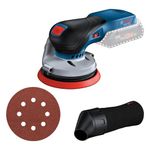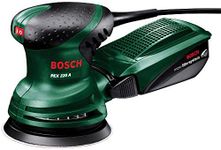10 bestRandom Orbital Sandersof December 2025
112M consumers helped this year.
1
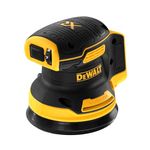
DEWALT 18V XR Brushless 125mm Sander, Bare Unit, DCW210N-XJ
DEWALT

10.0
2
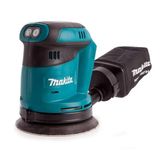
Makita DBO180Z 18V Li-Ion LXT Sander - Batteries and Charger Not Included
Makita

10.0
14% off
3
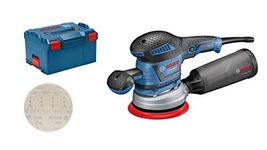
Bosch Professional Random Orbit Sander GEX 40-150 (incl. Auxiliary Handle, dust Box, Sanding disc Dia. 150 mm, M480 net Sanding Sheet, Extraction Adapter, in L-BOXX 238)
Bosch Professional

9.9
13% off
4
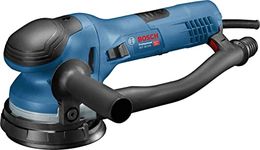
Bosch Professional Sander GET 75-150 (750 W, Sanding disc Ø: 150 mm, in Box)
Bosch Professional

9.7
5
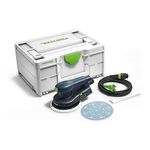
Festool Eccentric Sander ETS EC150/5 EQ-Plus 240V
Festool

9.5
OtherUp to 16% off
6

Milwaukee M18 BOS125-0 Random Orbital Sander 18V Bare Unit
Milwaukee

9.3
7
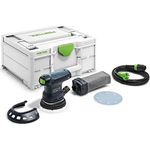
Festool Eccentric Sander ETS 125 REQ-Plus 240V
Festool

9.1
8

Festool 576073 Eccentric Sander ETS 150/3 EQ-Plus 240V, 173.0 mm*222.0 mm*108.0 mm
Festool

8.9
9
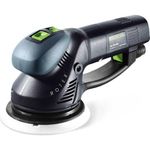
Festool Geared Eccentric Sander RO 150 FEQ-Plus 240V ROTEX
Festool

8.6
17% off
10
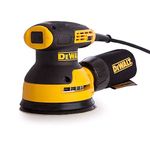
DEWALT DWE6423-GB Sander Eccentric, 240V Corded 125mm
DEWALT

8.4
A Guide to Selecting the Best Random Orbital Sanders
Choosing the right random orbital sander can make a significant difference in the quality and efficiency of your sanding projects. These tools are essential for achieving smooth finishes on wood, metal, and other surfaces. When selecting a random orbital sander, consider the type of projects you typically undertake, the materials you work with, and your comfort with handling power tools. Understanding the key specifications will help you make an informed decision that suits your needs.
Power Source
Random orbital sanders can be powered by electricity or batteries. Electric sanders are typically more powerful and are ideal for heavy-duty tasks or prolonged use. They require a power outlet, which can limit mobility. Battery-powered sanders offer greater portability and convenience, especially for outdoor or on-site work, but they may have less power and require regular recharging. Consider your work environment and the frequency of use when choosing between these options.
Motor Power
Motor power, measured in amps for corded models or volts for cordless ones, determines the sander's efficiency and capability. Higher power ratings mean the sander can handle tougher materials and larger surfaces more effectively. For light sanding tasks or occasional use, a lower power rating may suffice. If you frequently work on large projects or hard materials, opt for a sander with higher motor power to ensure smooth operation and better results.
Orbital Speed
Orbital speed, often measured in orbits per minute (OPM), affects how quickly and smoothly the sander can finish a surface. Higher speeds are suitable for rapid material removal and rough sanding, while lower speeds are better for fine finishing and delicate surfaces. Some sanders offer variable speed settings, allowing you to adjust the speed based on the task at hand. Consider the types of projects you work on and whether you need versatility in speed settings.
Pad Size
The pad size of a random orbital sander determines the area it can cover in one pass. Common sizes are 5 inches and 6 inches. Larger pads can cover more surface area quickly, making them ideal for large projects. Smaller pads offer more control and precision, which is beneficial for detailed work or tight spaces. Choose a pad size based on the scale of your projects and the level of detail required.
Dust Collection
Dust collection systems help keep your workspace clean and reduce airborne particles, which is important for health and safety. Some sanders come with built-in dust bags or can be connected to external vacuum systems. Efficient dust collection is crucial for maintaining visibility and ensuring a clean finish. If you work indoors or on projects that generate a lot of dust, prioritize models with effective dust collection features.
Weight and Ergonomics
The weight and ergonomics of a sander affect how comfortable it is to use, especially for extended periods. Lighter models are easier to handle and reduce fatigue, while heavier models may offer more stability and control. Ergonomic designs with comfortable grips can enhance user experience and precision. Consider how long you typically use the sander and your comfort preferences when evaluating these aspects.
Best Reviews Guide Newsletter
Get exclusive articles, recommendations, shopping tips, and sales alerts
Sign up for our newsletter to receive weekly recommendations about seasonal and trendy products
Thank you for subscribing!
By submitting your email address you agree to our Terms and Conditions and Privacy Policy
